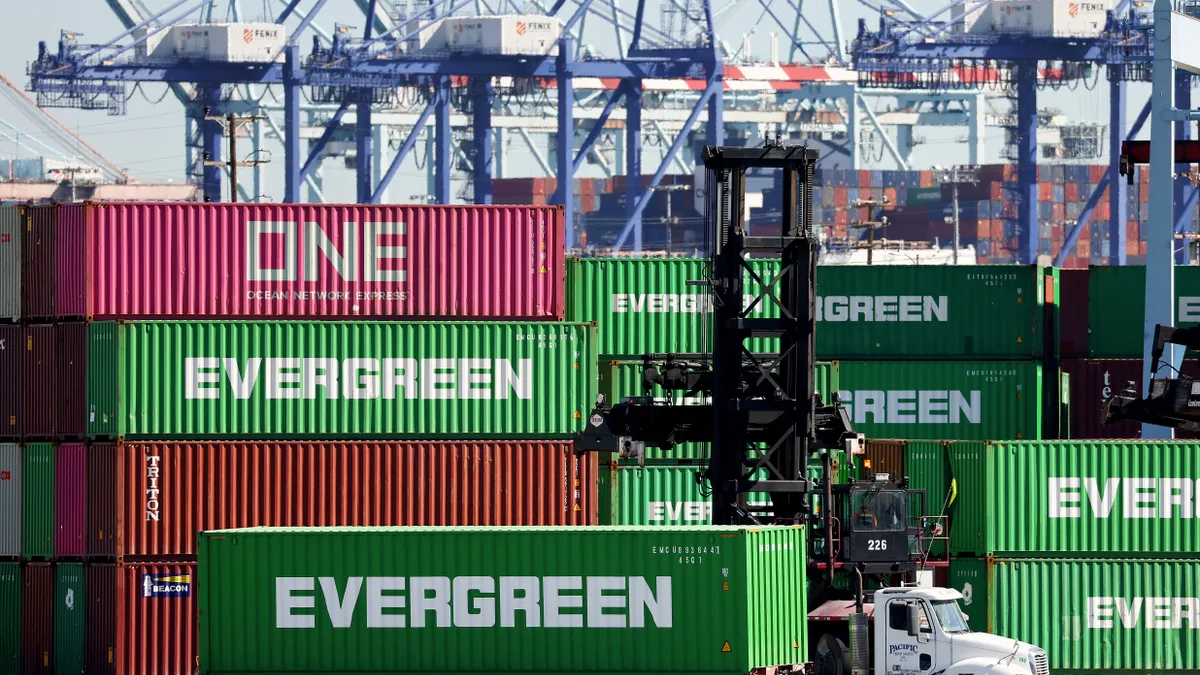Dive Brief:
- The Port of Los Angeles processed 770,337 total TEUs in April, up 12% year over year, according to a May 20 media briefing.
- Total imports were up 21% YoY with 417,181 total TEUs and total exports rocketed 51% YoY at 353,155 total TEUs.
- The port has experienced increases in commodities like recycled paper, animal feed, iron, steel and aluminum, contributing to its 11 consecutive months of YoY export gains, Port of Los Angeles Executive Director Gene Seroka said in the media briefing.
Cargo volumes by the numbers
Containers processed by the Port of Los Angeles in April 2024
Dive Insight:
The West Coast has been posting stronger growth than the East Coast in 2024, Daniel Hackett, a partner at Hackett Associates, said during the media briefing.
Despite the upswing, YoY growth rates on the West Coast are expected to be lower in the second half of the year compared to H1, according to Hackett.
But comparison gets "tricky" when observing pre- and post-pandemic volumes, Hackett said.
“If we go back to 2019, though, again, comparing the first quarter of 2019 on the West Coast, it's just a 5% increase, whereas on the East Coast is a 14% increase,” Hackett said. “When comparing Los Angeles and Long Beach to the East Coast from 2019 to 2024, the growth has been similar.”
Changes in what is considered peak season make forecasting less predictable. Peak season historically used to be sometime in August, followed by a second wind ahead of the back-to-school season, Hackett said.
“During the pandemic that all changed again. We actually saw peaks in May a couple times. And then last year the peak was in October, September on the West Coast, but October for all the global port track reports,” he added.
The upcoming labor contract expiration between the International Longshoremen’s Association and the United States Maritime Alliance also further impacts comparability between the ports. Some shippers are already bringing cargo ahead of that, Hackett said, which changes forecast volumes.
“That's one of the reasons why we always try to look at quarters and years, rather than month-to-month [which] doesn't always capture those kinds of volumes,” Hackett said.














